When it comes to backpack hunting, there is always a trade-off with optics. Backpack hunters want it all in a spotting scope: Big-scope optical performance at ultralight weights, with dimensions that leave plenty of room in the pack for the many other necessities for living out of a backpack on a hunt.
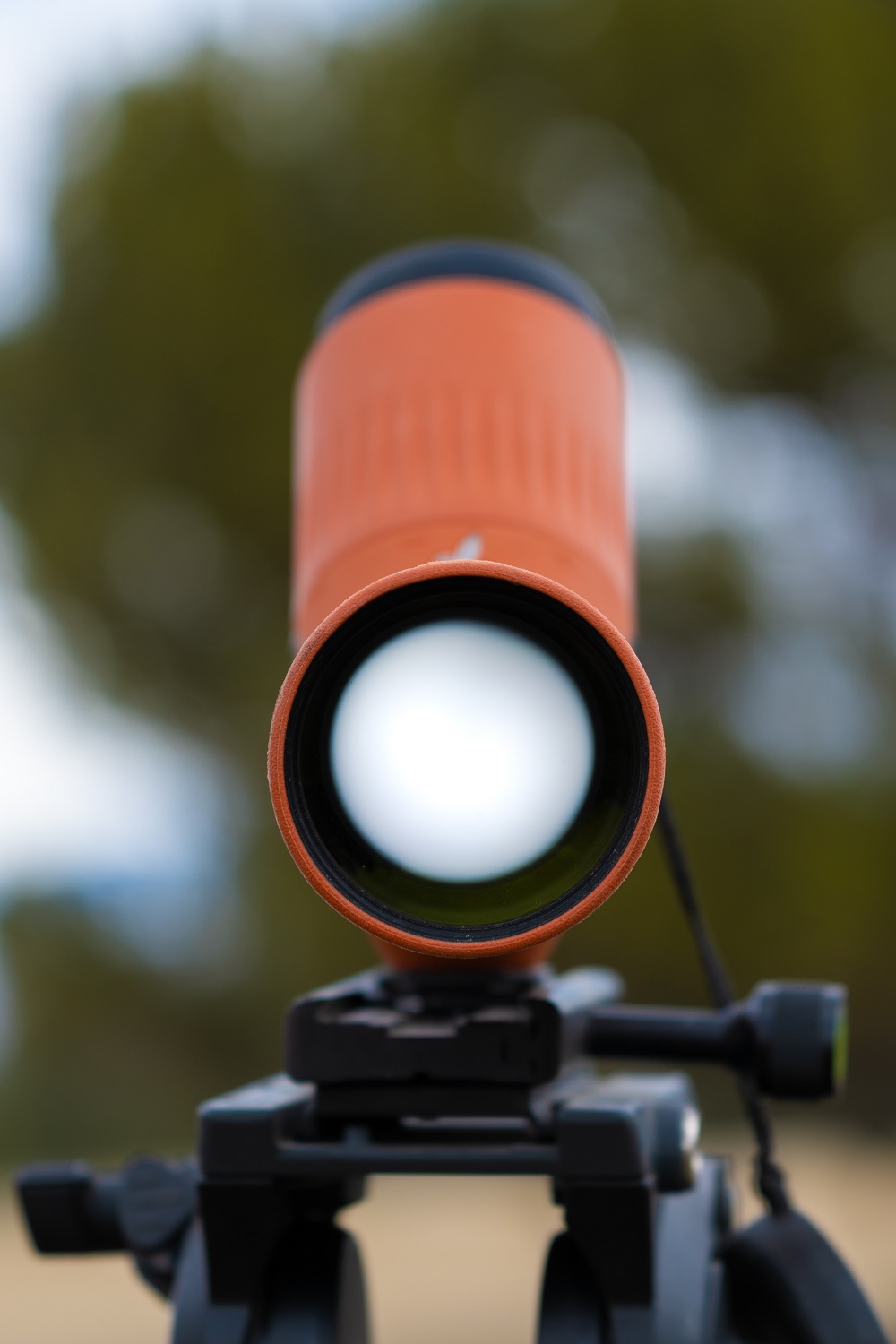
The compromises of performance, size, and cost really come into play when it comes to backpacking spotting scopes. The brightest scopes with the highest magnifications and sharpest images are also big, heavy, and expensive. Many backpack hunters have gladly traded some of that performance for lighter, smaller scopes that provide good enough images in tiny packages.
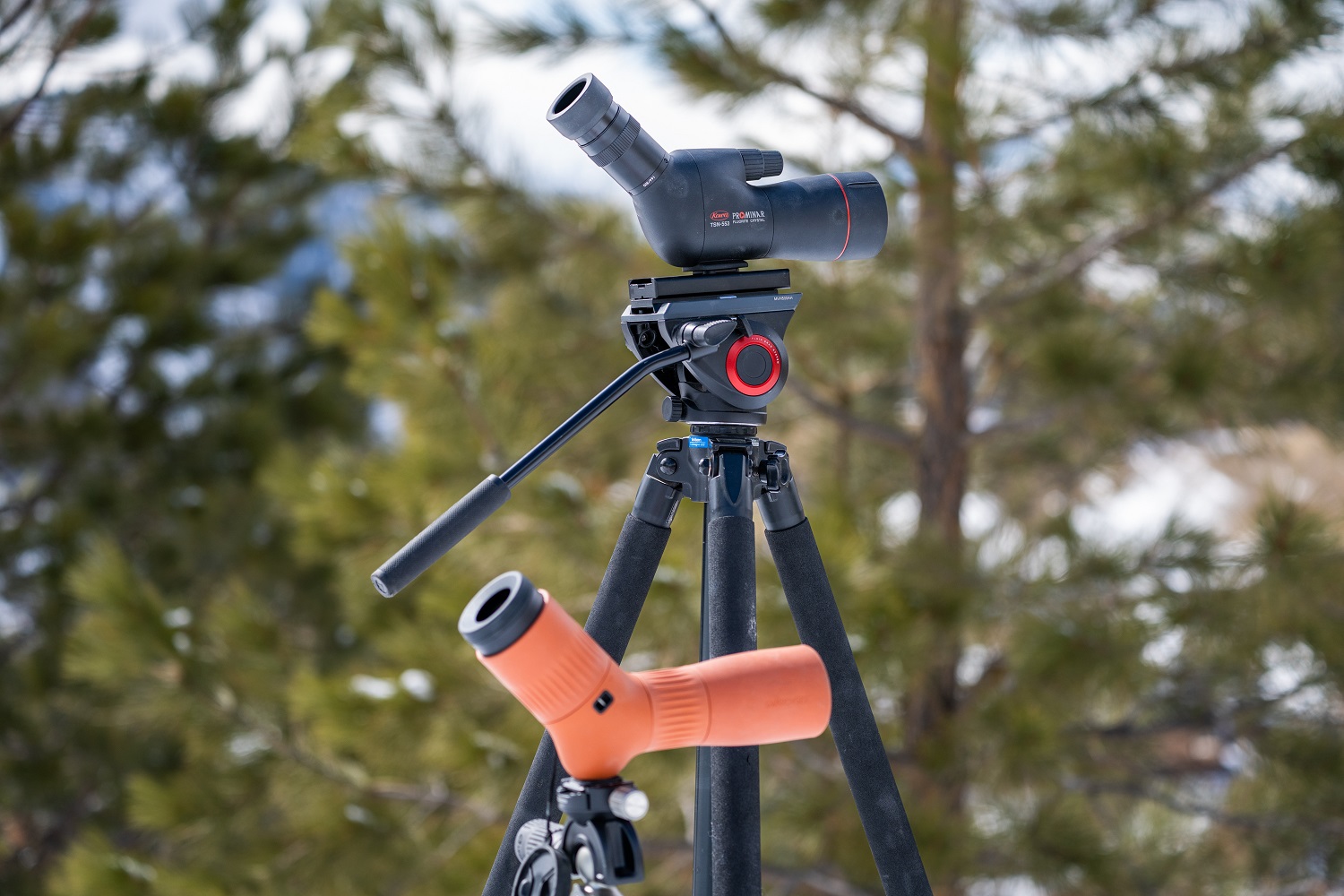
When it comes to premium spotters that are also small and light, two options have been the go-to choices for backpack hunters: The Kowa TSN-553/4 15-45X55mm spotting scopes are downright tiny but still provide great optical performance. Hunters needing a little more magnification often choose Swarovski’s venerable ATS 65mm objective spotting scope with either the 25-50 wide angle eyepiece or the 20-60 high magnification eyepiece, but at a weight and size penalty.
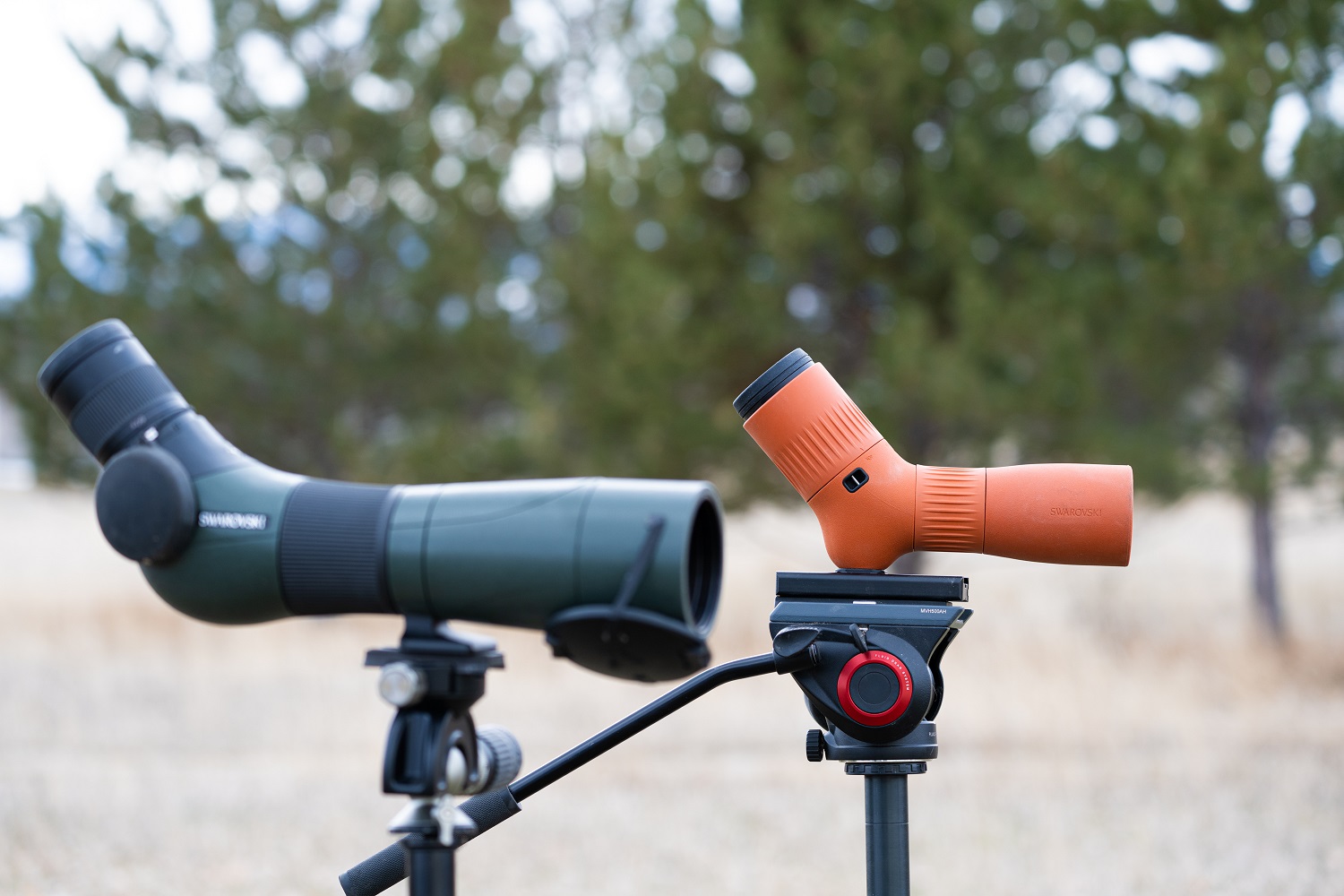
Swarovski recently added a new contender in this category with their ultracompact ATC/STC 17-40X56mm spotting scope. With this comparison, I was able to put these three popular backcountry scopes up against each other. I will refer to the Kowa 553 as “553”, the Swaro ATC as “ATC,” and the Swaro ATS as “ATS.”
Specifications:
Note: I measured all three scopes on my kitchen scale with their respective lens covers for the weights

Rokslide recently posted a detailed member review of the new Swarovski ATC here.
I decided to do a more technical, direct comparison evaluation with these scopes to supplement that excellent field report.
Build, Ergonomics, and Field Use
The first thing that jumps out about the Kowa and ATC is just how remarkably compact they are. The ATS looks huge next to them. Tiny spotters like these have some great advantages:
- Lower weight
- Less bulk
- Increased resistance to wind-induced shake.
- Stable on smaller/lighter tripods.
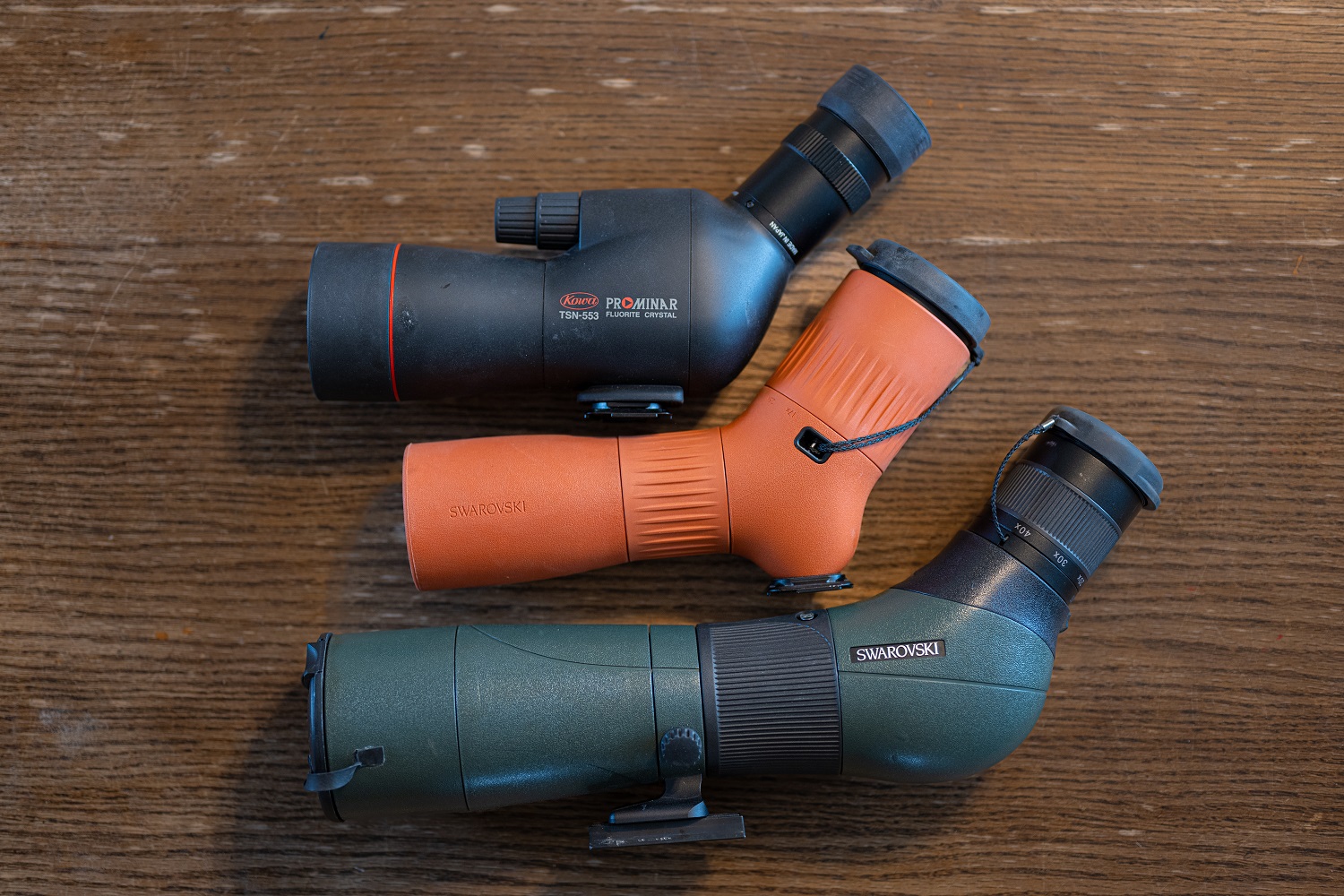
Both Swarovski scopes are covered by their excellent, lightly textured rubber armor. The Kowa 553 has a nice painted texture finish, but no rubber armor. In cold conditions, it is much colder to the touch. Many hunters will add a case of some sort to the 553, but that adds some weight and bulk. The Kowa-branded nylon/neoprene cover on the 553 I tested weighed in at 4.33 ounces, bringing the weight of the 553 to within 2.5 ounces of the ATC.
The two smaller scopes don’t include a rotating collar. Users looking for rotation would benefit from using a good ball head or looking for a 3rd party solution. The ATS is a full-size scope with an integrated rotating collar. I was surprised by how much I used this feature during this comparison. A rotating collar is especially convenient when using an angled scope like the ATS on a window mount.
The ATS and 553 both have extending integrated sunshades that help reduce glare when glassing toward the sun. The ATC does not. However, the objective lens is deeply seated from the front end of the housing, providing both shade and protection.
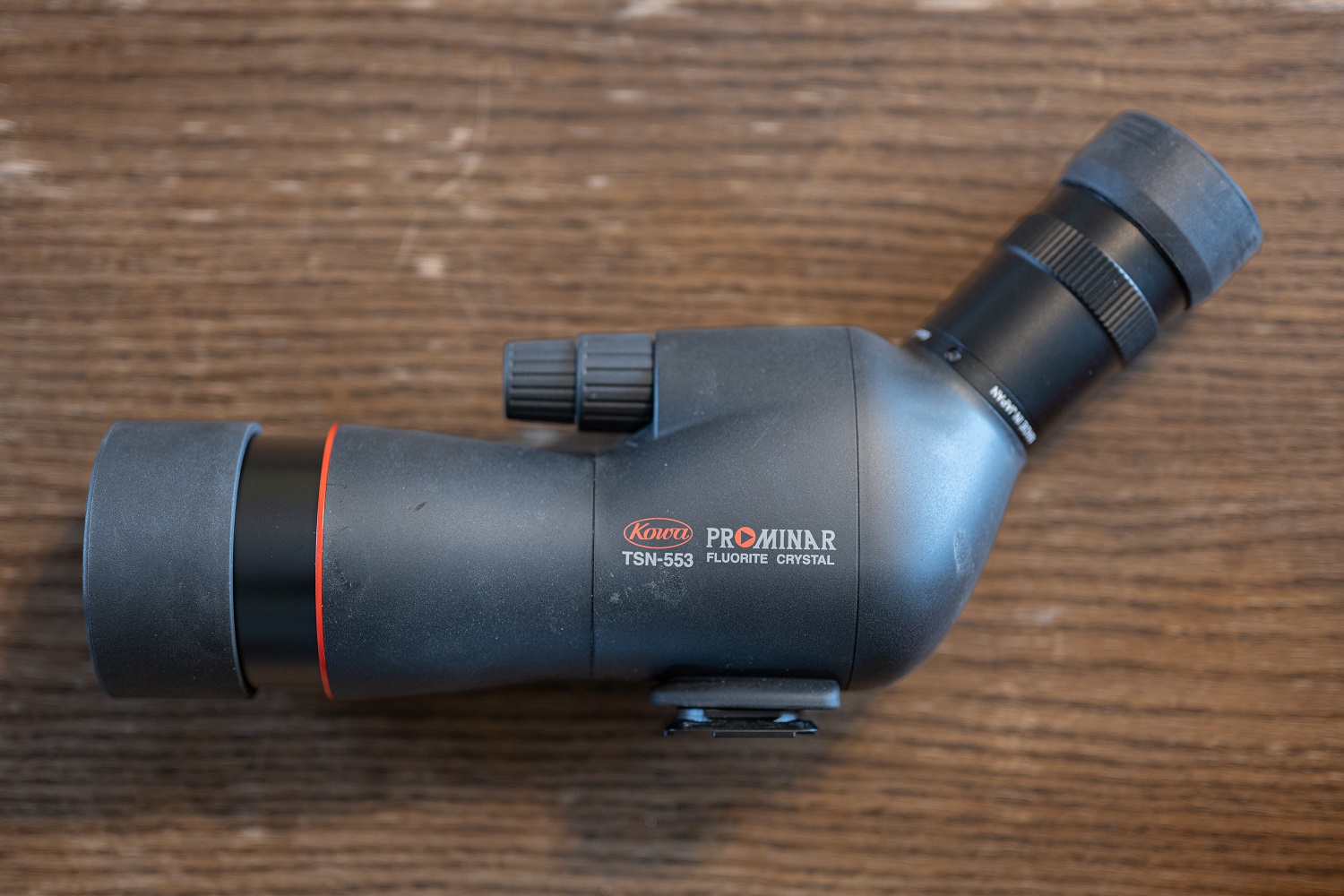
Both Swarovski spotters include helical focus rings that focus quickly and are reasonably precise with practice. The 553 has more traditional dual-focusing knobs for coarse and fine focus. The fine focus knob made getting the sharpest image a breeze.
Swarovski deserves a tip-of-the-cap for designing the ATC objective cap to nest securely inside the eyepiece cover. I found it very convenient to always know where that cap was.

Resolution
First, I did a close-range resolution comparison of the three scopes at 35 yards in stable air, good light, and overcast conditions. The test target was an Edmund Optics Resolution Card.

The results were as expected with these premium scopes: I first compared them at 40x, which was the highest common magnification. All three scopes resolved exactly the same element on the chart. Then I moved the 553 to its highest magnification of 45x and could not resolve a smaller element, but I could resolve the chart a little cleaner. Then I increased the magnification on the ATS to the maximum 60x. I could clearly resolve one element smaller at this magnification.

Next, I headed to the woods to make a long-range comparison. For this exercise, I put an 8X11 eye chart at 535 yards. The conditions were alternating sunny and overcast. Once again with all three scopes on 40x, they resolved the same line on the chart. Bumping the 553 to 45x made no difference. And again, the ATS at 60x resolved the most detail, leading to a clear resolution of one more line on the chart—but with a caveat: This was under stable air in overcast conditions. When the sun beat down on the target, the mirage became an issue with all of the scopes, but the 60x magnification of the ATS was degraded the most, as the highly magnified mirage wiped away detail in the unstable air.
Chromatic Aberration
Color fringing from chromatic aberration is controlled very well in these three scopes. With the 553, the tiniest bit of fringing can be seen just off center, with it increasing slightly towards the edge. The ATS was similar to the 553. Interestingly, the ATC was the best of the bunch in this area, where fringing was invisible in the center, and increased to a mild visible level at the very edge.
Other Optical Performance
The scopes differed a little bit in color bias, with the 553 providing a tiny bit warmer image to the Swarovskis. The contrast in these three scopes was spectacular, with rich, saturated images, losing only mild amounts of contrast at the highest powers. Distortion was an interesting comparison. I tested distortion by placing a power pole near the edge of the field to observe bending.
The 553 had minimal distortion, with straight lines staying straight right to the edge of the field at the highest magnification and the slightest pincushion distortion at minimum magnification.
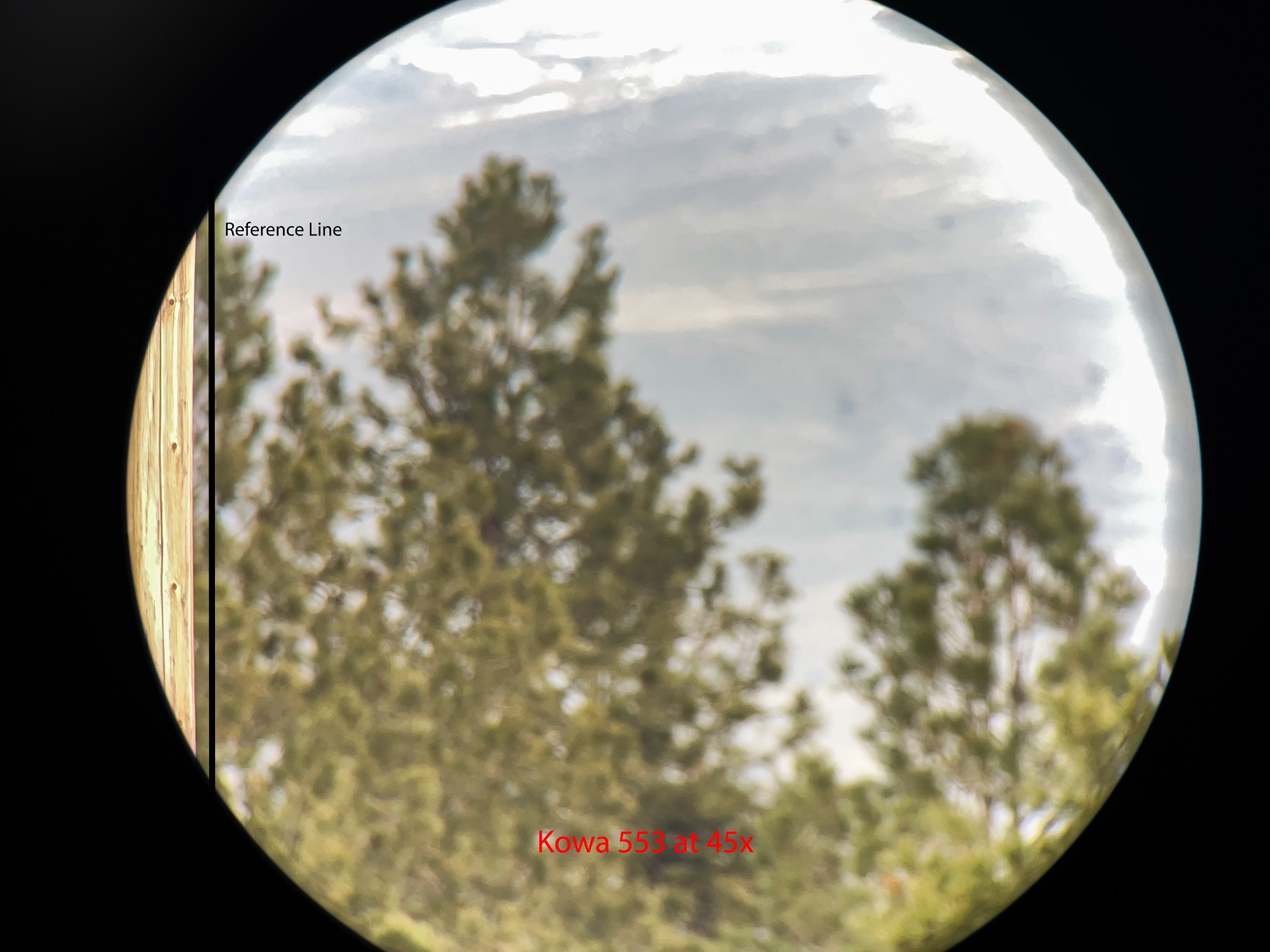
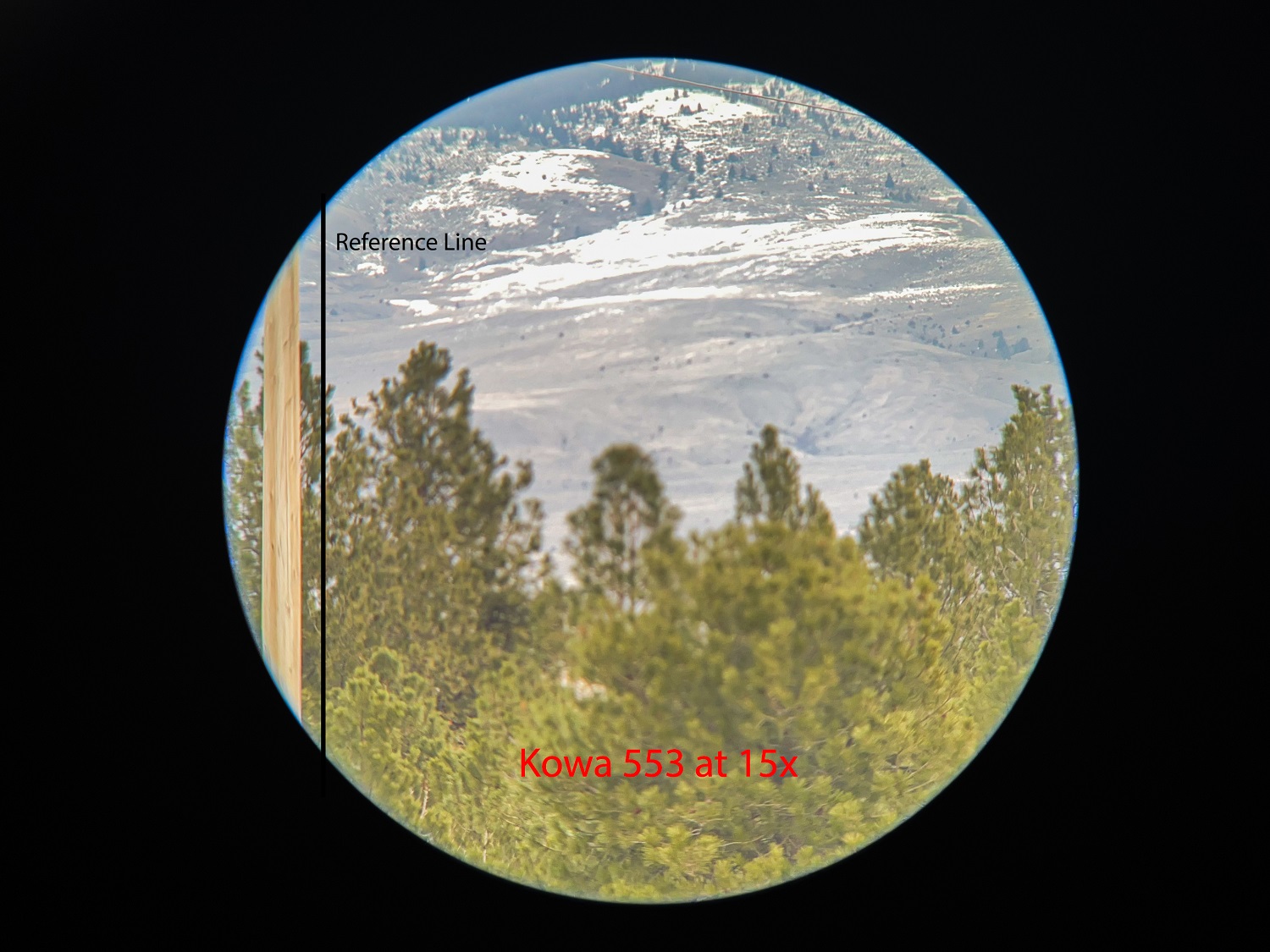
The ATC had more visible pincushion distortion at low magnification, but it was still quite mild. At high magnification, the pincushion distortion was present, but almost imperceptible.


The ATS had complex “mustache” style pincushion distortion at low powers, but it was also still mild. At high magnification, however, it was much more visible. Still, this level of distortion is relatively low compared to most optics, and would not affect viewing performance in most situations.


Field of View
Here we get to see some real differences between these scopes. The specifications above put the differences in the field of view in black and white, but the difference is really something in the field. To illustrate, I digiscoped views at low magnification and 40x magnification for each scope. I put the same cross-canyon tree near the center of the field for each scope. The differences were immediately apparent.
NOTE: These digiscoped photos do not represent the image quality of the scopes. They were taken solely to show differences in FOV:
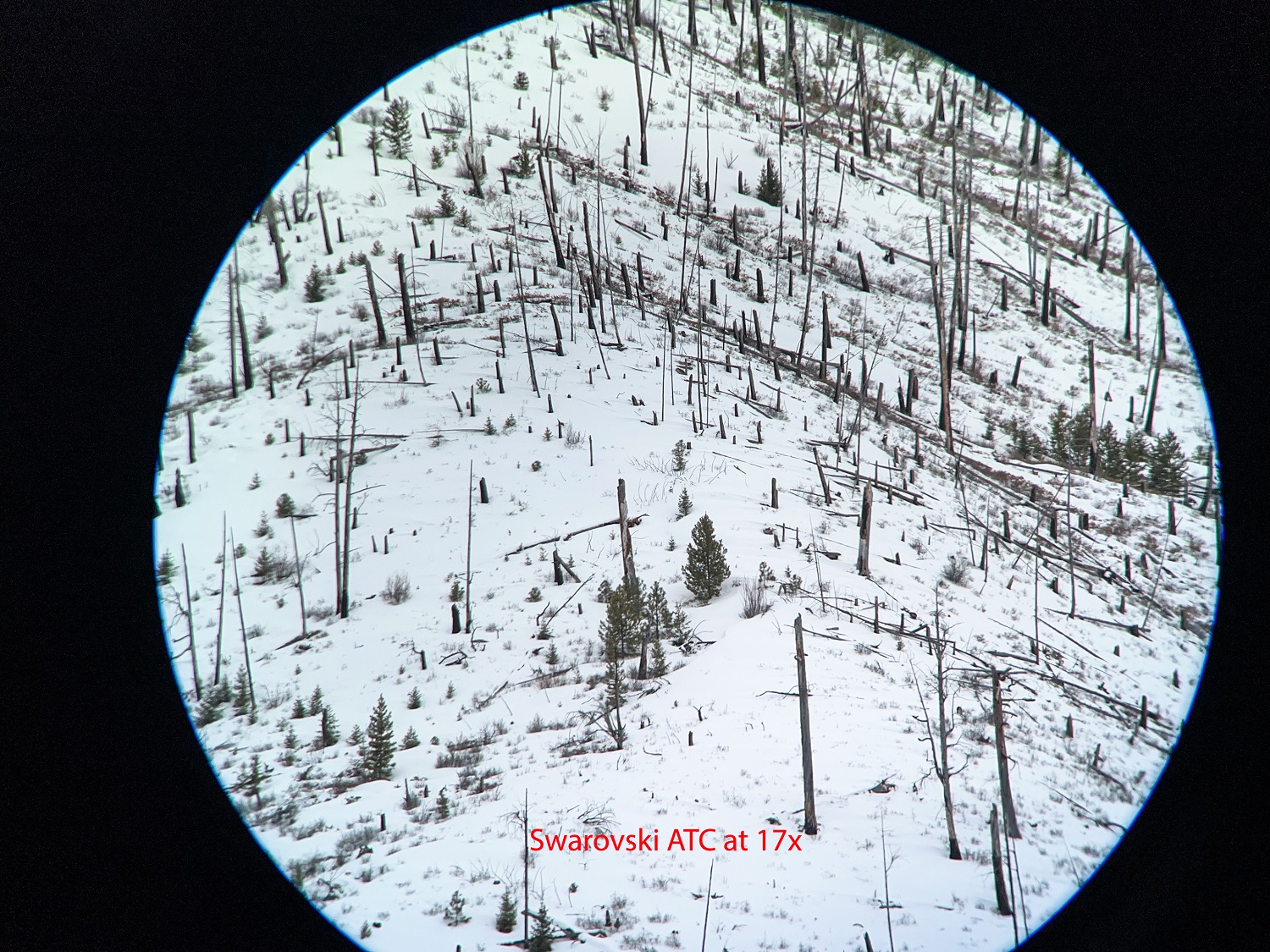
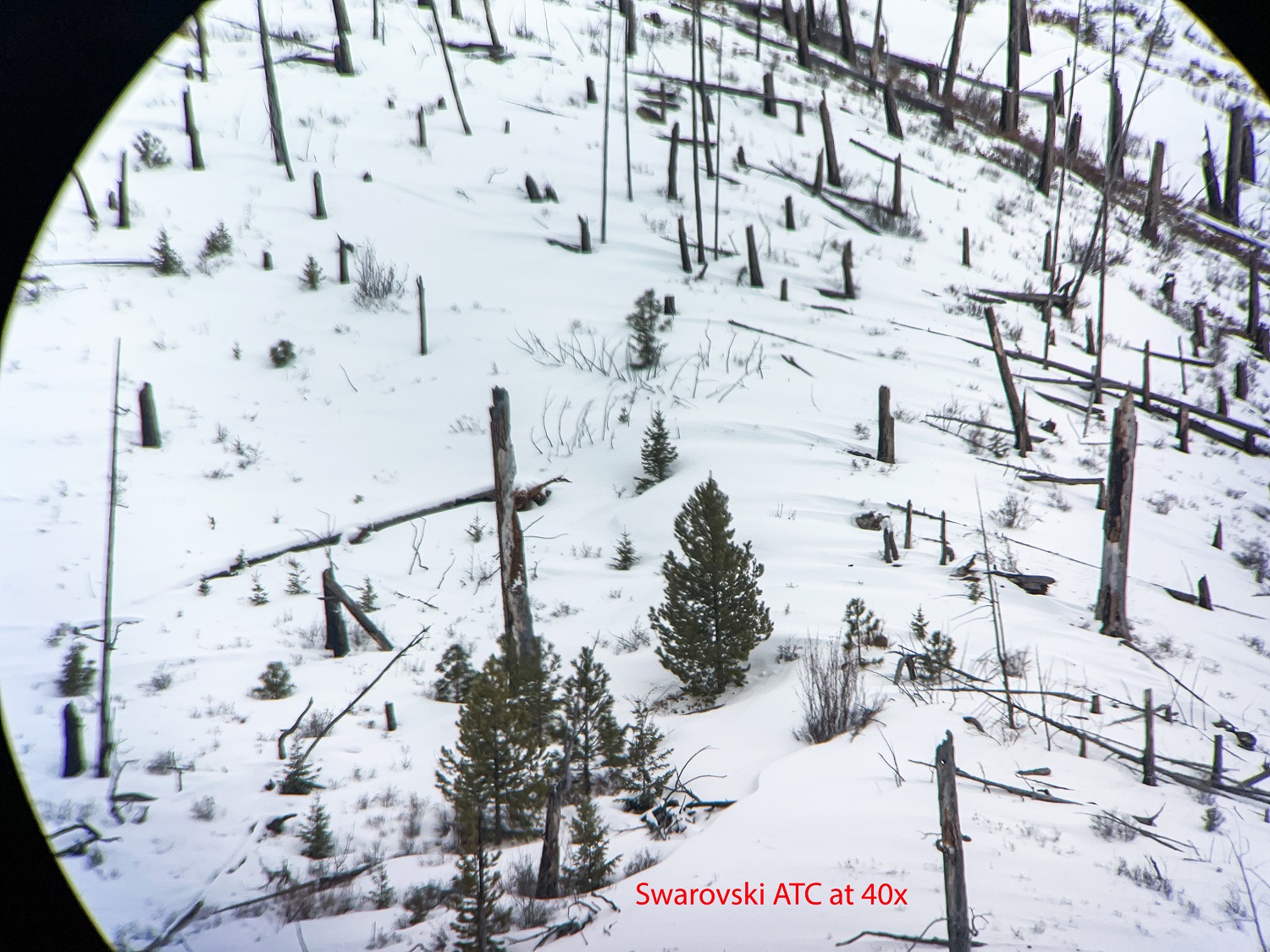
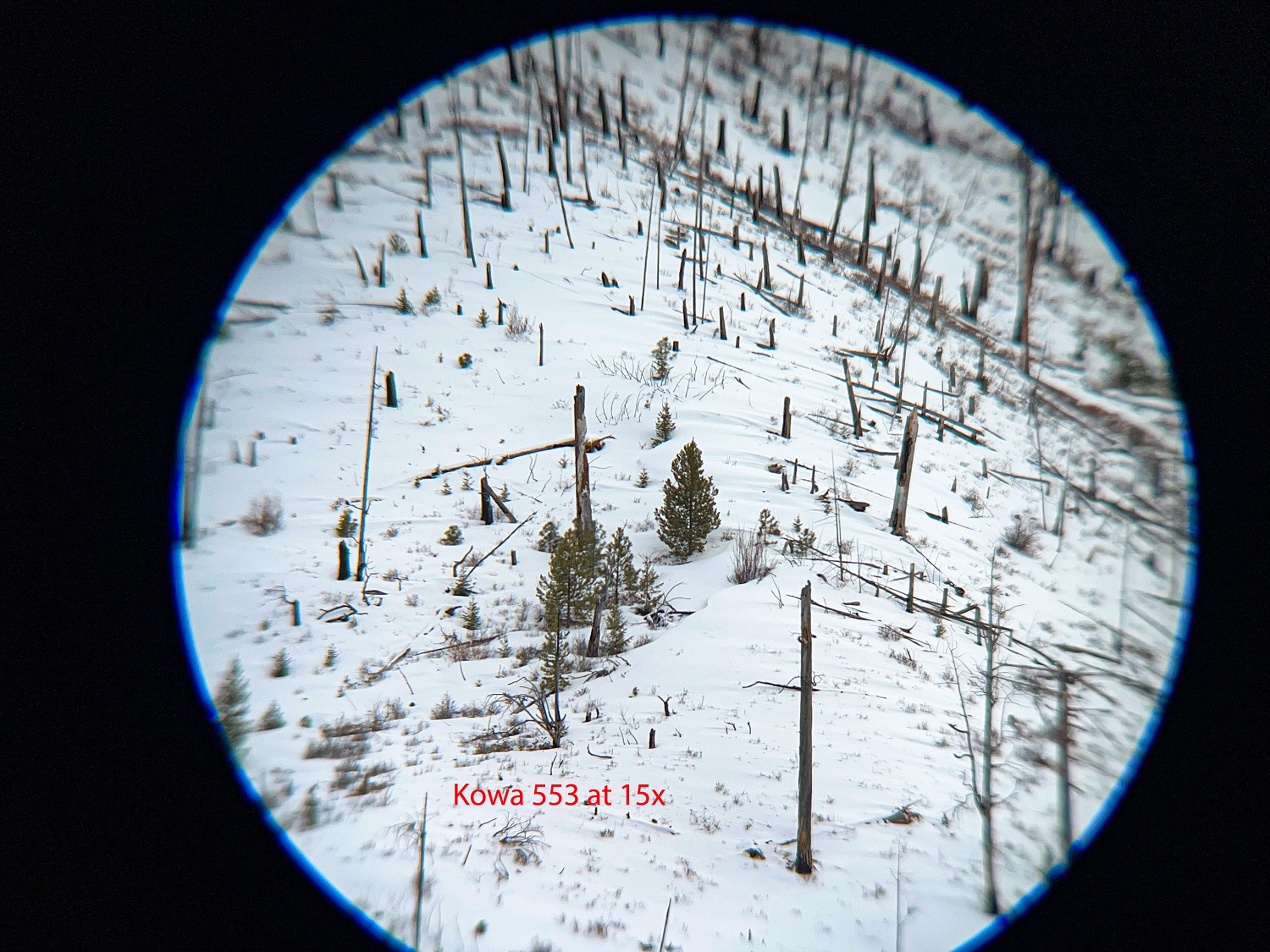
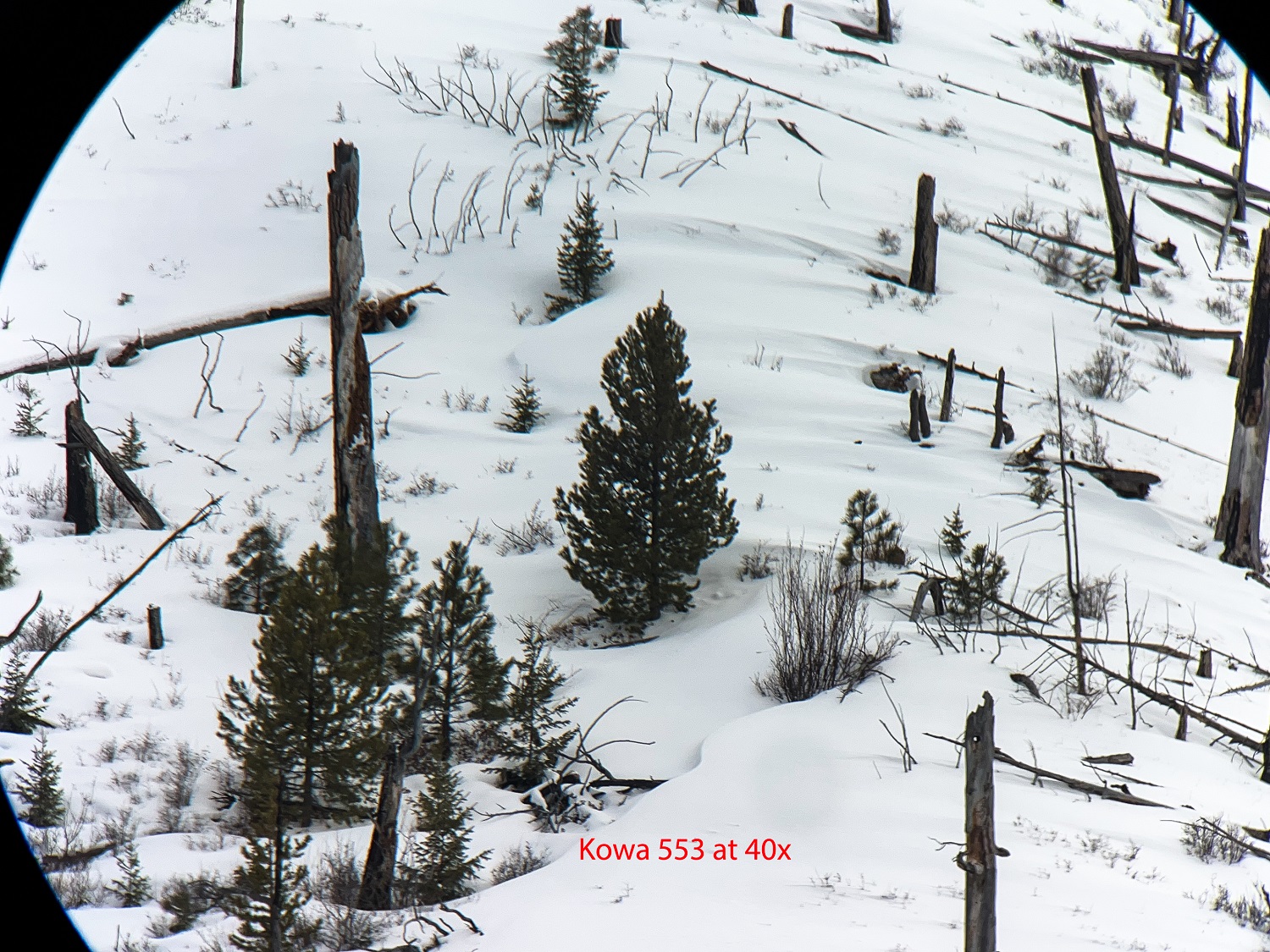
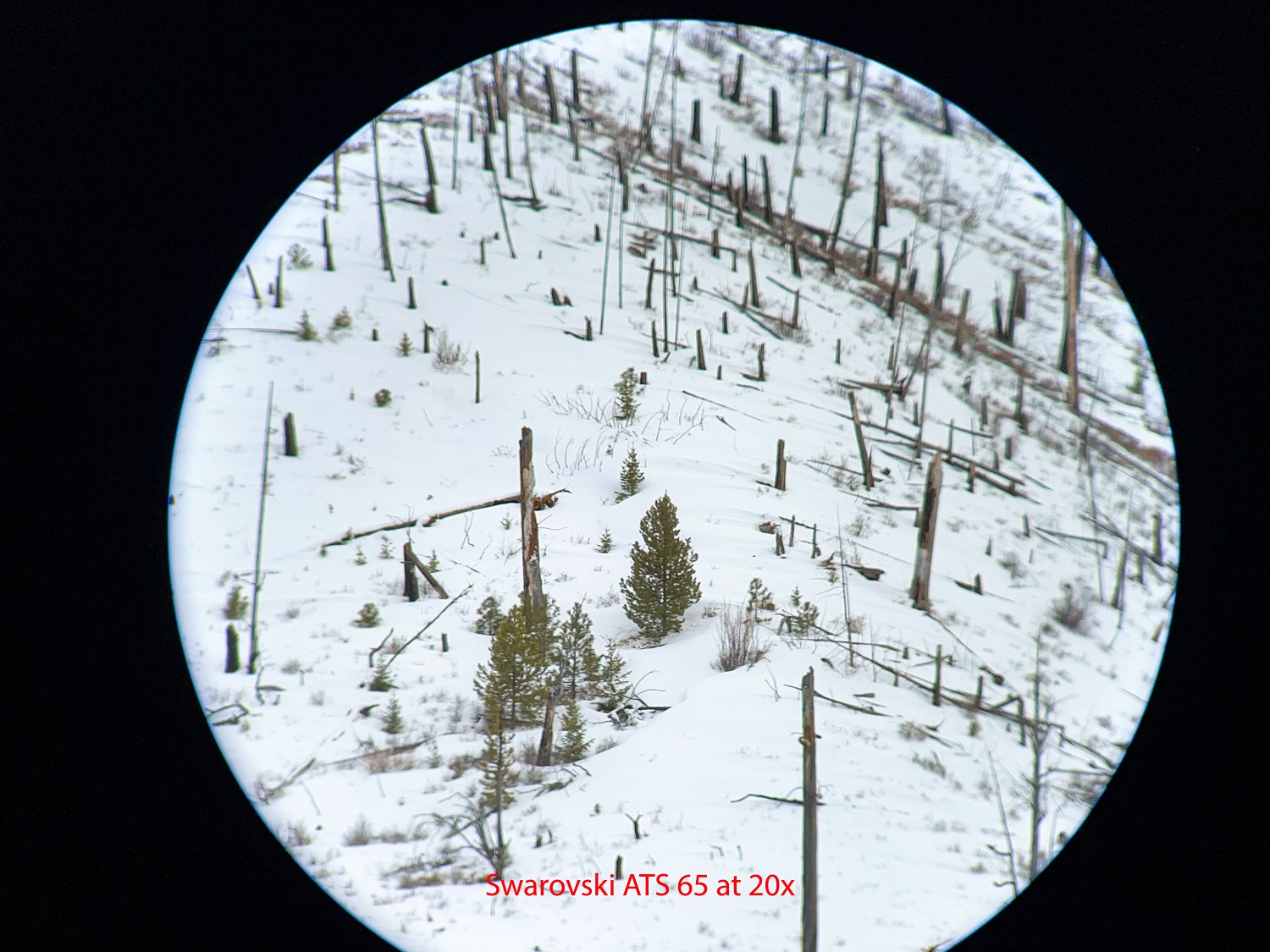
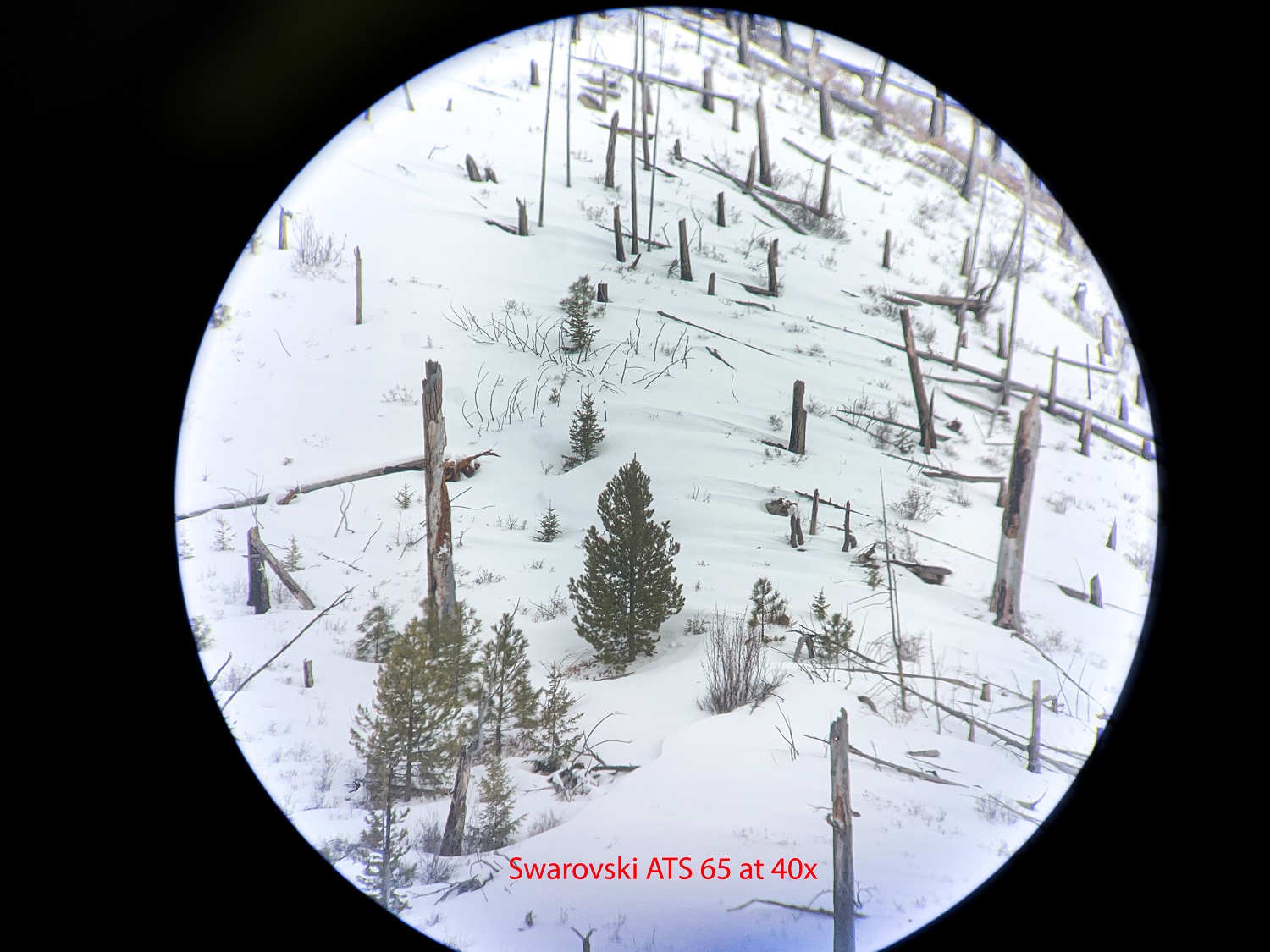
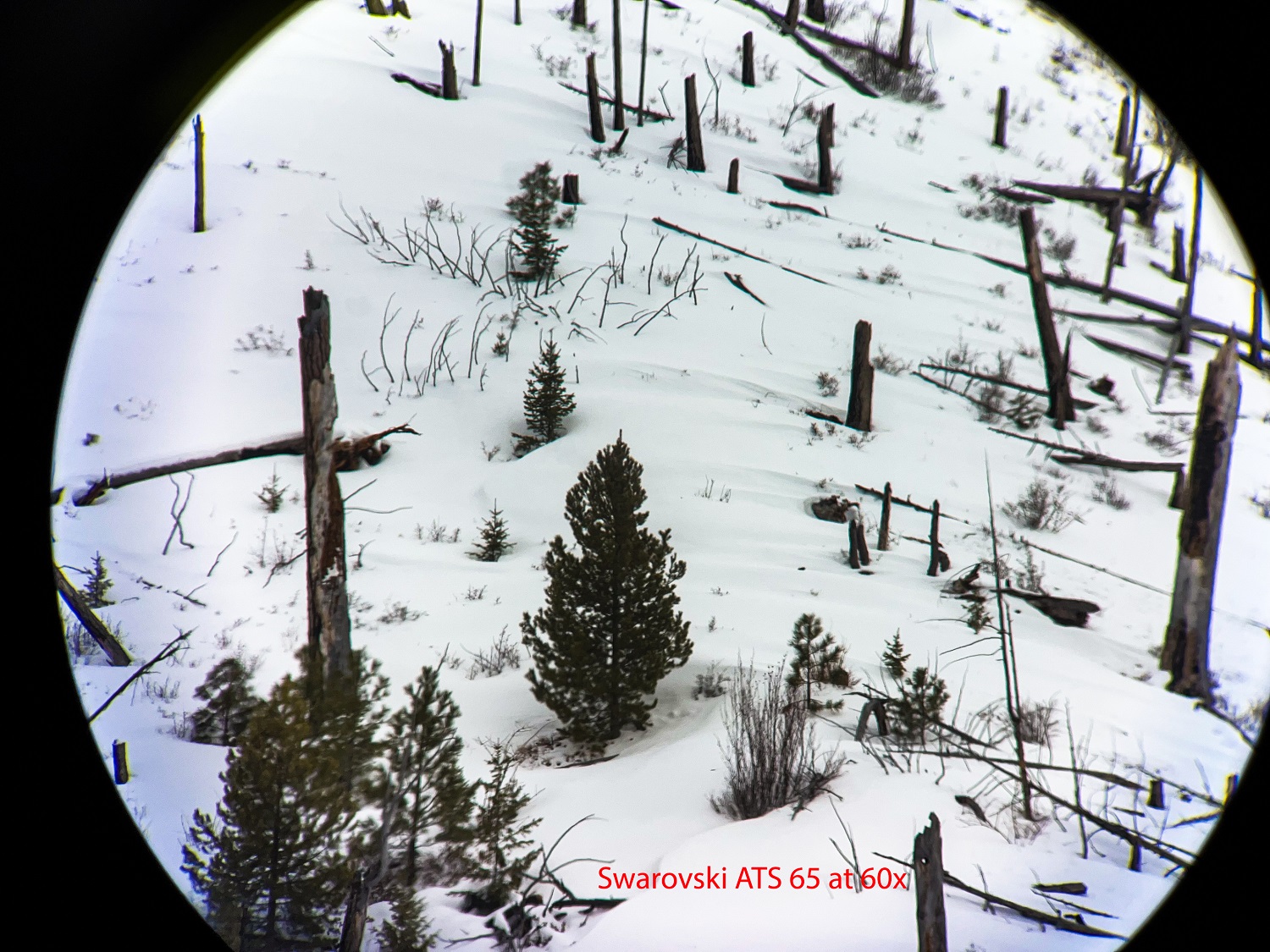
Of note, the ATC is so wide and so suitable for digiscoping, that it was hard even to get the field stop in the digiscoped picture. In fact, the ATC is so wide at 40x, that the viewer can see only 30 feet less of the hillside than the Kowa viewer can see at 15x AND ONLY 6 FEET LESS than the ATS at 20x! The amount of hillside available to the ATC at 17x is immense. Hunters that grid-glass large areas will find this tremendously helpful.
Low Light Performance
There is no free lunch in optics. At the same power, the larger objective of the ATS gave a notable advantage in low light, as expected. The Kowa and ATC were comparable in apparent illumination, and neither had a significant advantage over the other, even to the last hints of daylight.
Eye relief
When viewing without glasses, the 20mm of eye relief with the ATC was definitely the easiest to use, providing enough space at all powers to get the full FOV without touching the eyepiece at all, if preferred. The ATS (17mm eye relief) and 553 (16mm eye relief) were similar to each other in how easy to get behind, although the shorter eye relief and narrower FOV really gave more of a “through a tube” viewing experience with the 553.
Generally, longer eye relief specs lead to better usability for eyeglass wearers. This rule held true for these spotters, but not as much as I expected. All three scopes were easy to get a full field of view with glasses at the lowest powers by just lightly touching the surface of the eyeglasses to the eyepiece. At each scope’s highest powers, it became more difficult. With its long eye relief, the ATC was the best, with only mild pressure applied from the eyeglass to the eyepiece for the full FOV. The ATS was next best, with a little more pressure required. The Kowa 553 required the most pressure to get the full FOV while wearing glasses, although I was still able to get the full FOV even at 45x.
Digiscoping
Getting useable digiscoping images from these scopes was relatively easy, but as I hinted earlier, the ATC is just in a league of its own. The ATC shares its eyepiece design and construction with its ATX/STX premium big brothers. The eyepiece both has the widest FOV and the physically widest eyecup. Both of these attributes benefit the digiscoper. The ATC eyepiece design also allows the camera lens to get very close to the eyepiece lens. The result is very limited vignetting, and consistent, repeatable mounting of the digiscoping adapter.

Conclusion
These scopes are all winners. Budget and use case will determine the winner for each hunter.
The Kowa is the least expensive and lightest scope in this comparison and still has great optical performance. The image is sharp and well-corrected with low distortion. The Kowa has the most precise focus system. Hunters choosing the 553 save nearly a Grand over the Swarovski scopes, but they must deal with the narrower FOV, lack of rubber armor, and shorter eye relief.
The ATS is a great “do everything” scope that flirts with the “compact spotter” classification. It is full-featured, well-corrected, and provides the most resolution under good viewing conditions with its ample 60x maximum magnification. The ATS has multiple eyepieces available, with the 25-50 being a wide-angle option. The cost between the ATS and ATC is negligible, so hunters willing to pack the extra pound will benefit from the extra brightness and resolution potential of the ATS. Hunters that want a scope that works well for backpacking, the range, and from the truck will find the ATS 65 the most versatile.
The ATC is a gem. It is sleek and small. It weighs a bit more than the Kowa 553 but saves nearly a pound on the ATS. The optical performance is remarkable. In this comparison, the ATC is at least as good as the two others in good light and at equal magnifications. It has a stunningly wide field of view that is easy to get behind and glass for extended periods. The eyepiece is the best of the bunch for both viewing and digiscoping. This is the best ultracompact spotting scope currently available for hunters that spend most of their time hunting out of a backpack. Unfortunately, it comes at a slight weight penalty and a not-so-slight price premium.
Comment or ask Matt questions here.
Optics reviews.



















